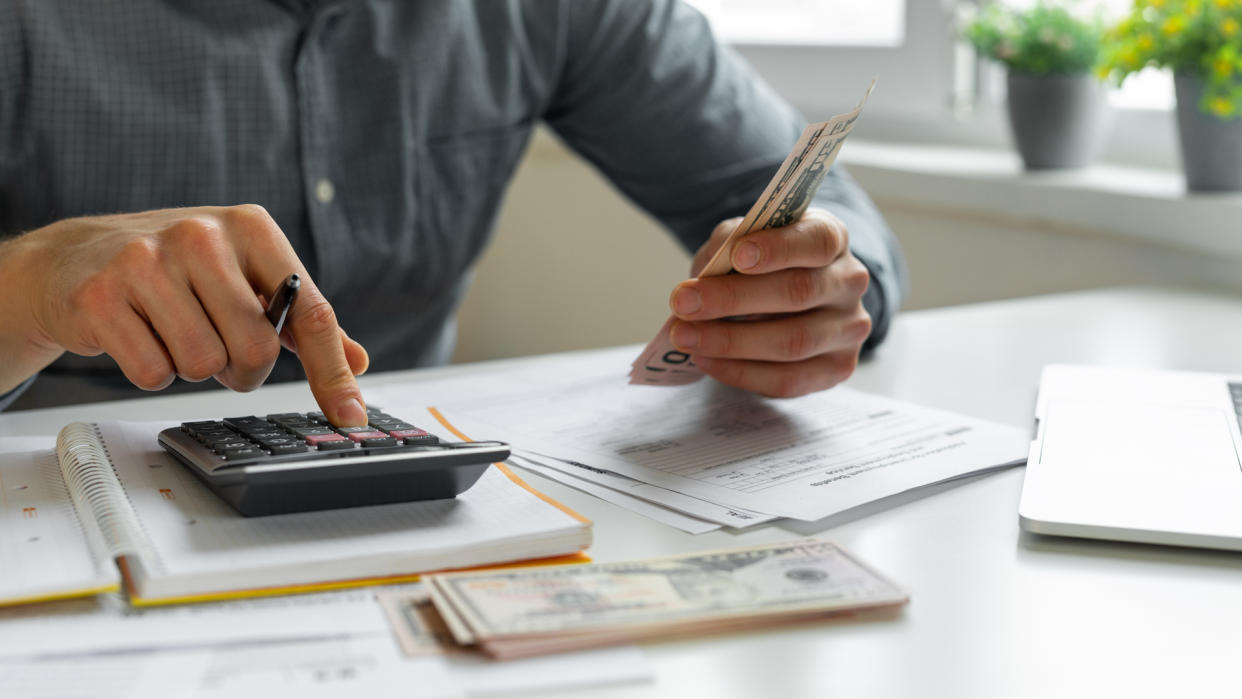What Is a Personal Inflation Rate And How Can It Help You Budget As a Recession Looms?

The Consumer Price Index report for September calculated the inflation rate at 8.1% since last year, as GOBankingRates recently reported. But because inflation rises at different rates depending on the goods or services purchased, your household’s personal inflation rate could be substantially higher — or lower.
Discover: September’s Consumer Price Index Shows Inflation Higher Than Expected After Fed Rate Hikes
Social Security COLA 2023: How Can I Find Out How Much More Money I Am Getting?
You can calculate your personal inflation rate to determine the best ways to save money during these challenging financial times. Once you know how much purchases you normally make have increased, you may be able to adjust your budget so you feel the sting a little less.
Calculating your personal inflation rate is similar to calculating your monthly budget, according to a report from NBC News.
Gather Your Bills and Expenses
First, gather your credit cards and bank statements and monthly household bills — anything you can use to track your spending each month. If you’re already using a budgeting app like Mint or YNAB (You Need a Budget) this step will be even easier, as many apps already break your spending into categories.
Then, list out all the categories the BLS tracks when calculating the CPI. The BLS divides expenses into the broad categories of Food, Energy, and All Items Less Food and Energy.
For a clear picture of your spending and an accurate account of your personal inflation, you’ll want to factor in at least some of the other items, beyond food and energy. You may also want to break out food and energy into their sub-categories. For food, these include ingredients to cook meals at home, and food away from home. Energy categories include gasoline, fuel oil, electricity, and natural gas.
Some of the broad categories in the All Items Less Food section include appliances, household supplies, medical care services and commodities, education services, recreation services, and shelter. A full list is available via the BLS website.
How to Calculate Your Personal Inflation Rate
Then, consider your spending across whichever categories you feel take up the biggest percentage of your household budget. Look back over your last 12 months of bills, beginning with September 2021. Calculate your total expenses in each category you choose for each month.
For instance, let’s say your monthly expenses for September 2021 totaled $5,000 — and in September 2022, they hit $5,500. If there is an overage (in this case, $500) that figure would be used to calculate one’s year-over-year personal rate of inflation. For example, the overage ($500) divided by the previous year’s monthly expenses for September ($5000) produces a number of 0.1 (or a fraction of 1/10) which equals 10%. This means your family would — in this hypothetical budget — be experiencing greater than average inflation.
Take Our Poll: Are You Struggling To Keep Up With Your Utility Bills?
You’ll want to look at the categories where you spent the most money, and see where you can cut costs to offset the national inflation rates.
More From GOBankingRates
This article originally appeared on GOBankingRates.com: What Is a Personal Inflation Rate And How Can It Help You Budget As a Recession Looms?

 Yahoo Movies
Yahoo Movies 
